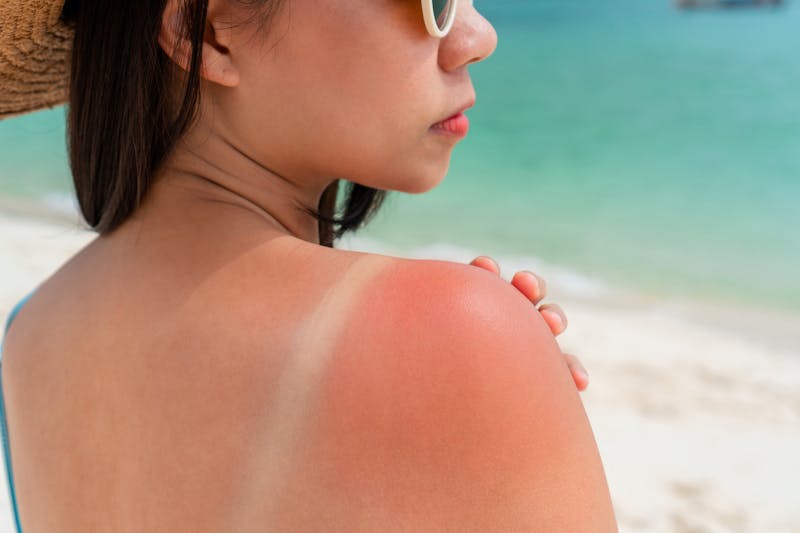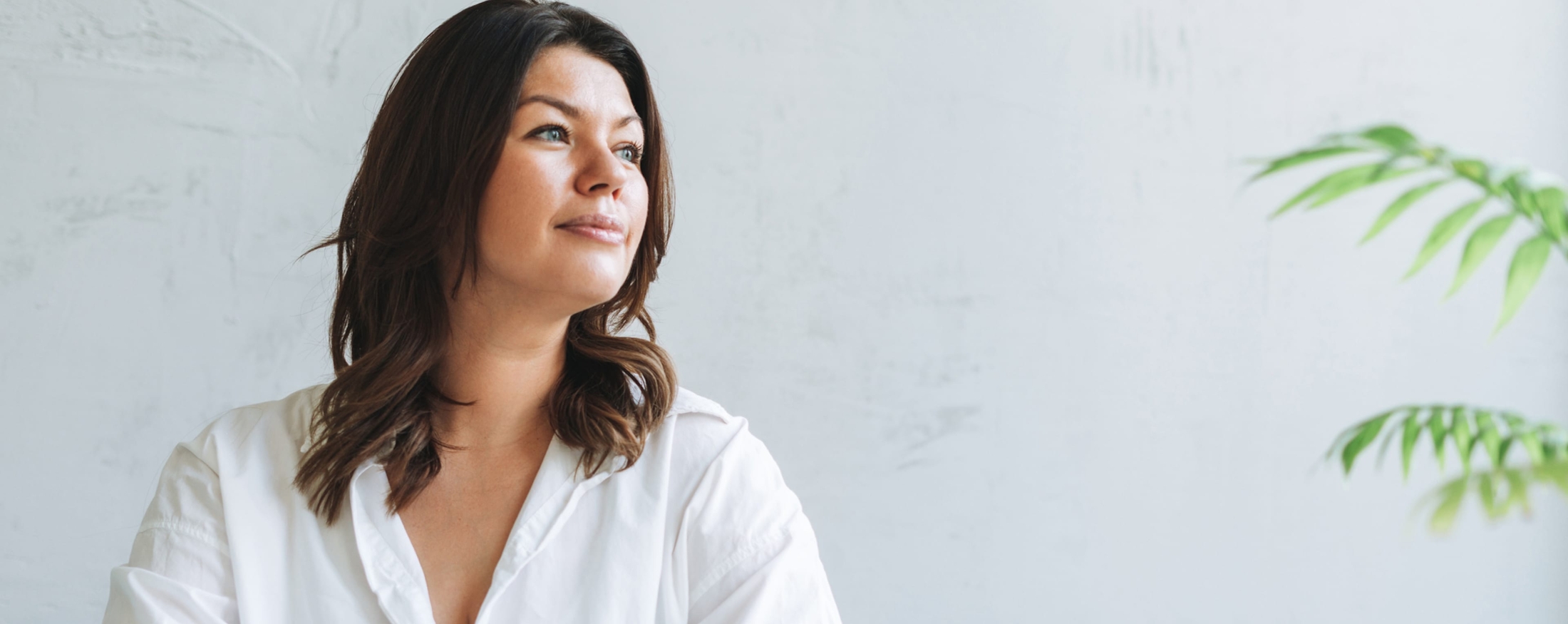
We want you to get out and enjoy the Arizona summer, but we also want you to be safe! In addition to hydrating your body, you must protect your skin from the sun’s UVA and UVB rays. Sun damage doesn’t just increase your risk of skin cancer, it breaks down collagen and elastin fibers—accelerating fine lines and wrinkles. Here’s how to enjoy summer without damaging your skin.
There’s no such thing as “safe sun tanning”
We get that you love the way your skin looks when it’s a few shades darker. But the sun begins damaging your skin in as few as 5 to 10 minutes. Yes, you need vitamin D, but getting a suntan should never be the objective.
What is a tan?
A suntan is your body’s natural defense against UV radiation. Your skin is intelligent. As sun exposure increases, your body begins producing more melanin to absorb the UV rays. The longer you’re in the sun and the more frequently you’re in the sun, the darker your skin gets. If you stay too long, you’ll burn. Even if you don’t burn, tanning is a sign of UV damage.
Just one sunburn increases your risk of skin cancers, including melanoma, basal cell carcinoma, and squamous cell carcinoma.
Can you suntan without UV damage?
No! If you lie out in the sun without adequate UV protection, or without reapplying UV protection, you will begin to damage your skin in 10 minutes or less.
Are tanning beds safer than the sun?
No! In fact, tanning beds deliver UV rays that are 10 to 15 times more intense than sunlight. So, they damage your skin, cells, collagen, and elastin faster.
Do you need a “base tan”?
No! The concept of tanning before vacation to minimize burn risk is an urban myth. Apply head to toe (skin, lips, and hair) sunscreen when on vacation or in the sun.
Are the sun’s rays less intense in the morning?
Yes, but it’s still UV exposure. UV rays are more intense during “peak hours”. During peak hours, skin damage may occur in as few as 5 minutes. Peak hours vary by location and time of the year, typically between 10 am and 4 pm.
We advise that you protect your skin from sun damage regardless of the time of day. That said, you may plan your outdoor activities when the temperature is lower so that it’s not as hot.
Are self-tanners and tanning sprays safe?
Maybe. Topical tanning sprays and creams eliminate UV risk but may contain unnecessary chemicals. Topical tanners are increasingly formulated with plant-based ingredients, which are safe and effective for most.
Do self-tanners and tanning sprays protect your skin?
No! Topical tanning products provide zero UV protection. Always apply UV protection on top.
Invest in UV protection
UV protection has come a long way in the last decade. From daily broad-spectrum BB cream with antiaging ingredients to sweat-wicking UV clothing, and streak-free sunscreen. You’ll need a mix of UV products to keep your skin safe.
- Broad-spectrum UV protection 50: Apply sunscreen at least every 2 hours when outdoors and every 4 hours when indoors. Use waterproof and sweatproof formulas when needed. Consider facial products, including ISDIN and Korean BB creams, that contain broad-spectrum protection and anti-aging ingredients that reverse photoaging. Don’t forget your hair, lips, hands, and feet!
- Ultraviolet protection factor (UPF) 50: UPF clothing minimizes the need to reapply sunscreen. Many of us only apply sunscreen to areas directly exposed to the sun, but if you don’t know your clothing’s UPF rating, the skin underneath your clothing may be exposed. UPF clothing is increasingly long-sleeved and full-length in the leg, breathable, and sweatproof for superior all-day coverage.
- Hat and shade: UV protection gives you an excuse to wear your biggest brim summer hat! Even if a hat isn’t UPF-rated, it provides shade. Small brims and bills shade your face, and maybe your neck. The larger the brim, the more your body is protected. When possible, seek shade to stay cool and minimize UV exposure.
Signs of sun damage
#1 Premature or accelerated fine lines and wrinkles
Cigarettes are the only thing that ages your skin faster than UV damage. Be mindful that the sun isn’t the only source of UV rays in modern lifestyles. Many of us are exposed to the blue light of fluorescent lighting and electronic devices (laptops, smartphones, notebooks, etc.) all day long. This is one of the reasons to ensure you apply broad-spectrum UV protection, even when you’re indoors. When indoors, reapply at least every 4 hours. You can use a noncomedogenic facial spray, powder, or BB cream so that you don’t disrupt your makeup when reapplying.
#2 New freckles
If you’re developing new freckles or you develop your first freckles in adulthood, they aren’t freckles—they’re sun spots. Sun spots (aka. liver spots) are most common on areas regularly exposed to the sun, including your face, décolletage, and hands. They’re your skin’s response to sun damage. Your body increases melanin production (skin pigment) to protect itself from further damage. This results in tan, brown, red, or purple spots.
#3 Other hyperpigmentation
In addition to small freckle-like spots, you may develop large spots and dark patches. The sun is a contributing factor, but hormonal fluctuations during pregnancy or perimenopause also boost melanin production. Most adults, both men and women, will experience some type of hyperpigmentation with age. However, women have thinner skin and a higher risk of developing sun spots before their 70s.
If your skin is darker (Fitzpatrick skin type 4, 5, or 6) you have an increased risk of hyperpigmentation.
#4 Broken blood vessels on the face
The red “broken blood vessels” on your nose and cheeks are spider veins. On the face, spider veins are most often caused by photoaging. UV rays break down elastin fibers and decrease elastin production, which also slows as you age. Elastin fibers are responsible for holding blood vessels taut. As elastin production declines and degrades, blood vessels sag. When they sag, blood doesn’t flow as freely, making the vessels on your face more noticeable.
In addition, as you age, your skin thins, blood circulation slows, and elastin production slows. This is why you may have spider veins all over your body. On your fac,e they’re typically red, but on your body, they may be red, purple, blue, or black. Schedule an appointment with a vein specialist to assess new spider veins.
#5 Chronic red neck, cheeks, or chest
When you get a sunburn, your skin will return to your natural pigment, but if your décolletage, cheeks, or the sides of your neck, become permanently red—you may have developed poikiloderma. Poikiloderma is most common in those who work outdoors or spend a lot of time outdoors.
Over time, your increased UV exposure permanently enlarges blood vessels, creating a solid or patchy redness. Reddening can also be caused by rosacea and a range of skin conditions, so it’s important to seek medical care.
#6 Leathery skin
Excessive UV exposure, including sun tanning and tanning beds, doesn’t just break down collagen and elastin—it causes collagen to pack together. Collagen is a series of web-like layers underneath your skin. Healthy collagen is flexible, unhealthy collagen is tight and crosslinks or sticks together.
Targeted facial massage, fascia release tools, and collagen-optimizing med spa treatments may improve your leathery texture. In some cases, the sun damage is too extreme to be reversed.
#8 Blackhead clusters
Blackheads are most common on the nose, chin, cheeks, and back. If you’re not prone to blackheads and you start to develop clusters on your cheeks and temples, it may be due to chronic sun exposure.
As elastin breaks down, pores enlarge, trapping dirt that forms blackheads within. This is sometimes diagnosed as Favre-Racouchot. This skin condition is more common in men than women.
Healing your sun-damaged skin
The options below won’t decrease your risk for skin cancer, but they can slow or reverse the signs of aging. Use proactively during the summer or reactively any time of the year to repair your skin.
- Restorative skincare products: All skincare products nourish the skin, but some are more restorative than others. Apply antioxidant-rich serum or products infused with PLLA, caviar, or stem cells at least once per day.
- Med spa treatments: We offer a range of minimally invasive treatments to address everything from hyperpigmentation to decreased collagen and elastin production and improved skin tone and texture.
Let’s discuss how we can rejuvenate your skin!
Schedule a consultation to learn how the team at Valley Medical Weight Loss and Med Spa can help you restore, refresh, and rejuvenate your skin. Our advanced technologies activate your body’s natural healing response to smooth and regenerate.
For your convenience, we have locations in Phoenix, Glendale, and Tempe, and Chandler (Coming Soon)!

